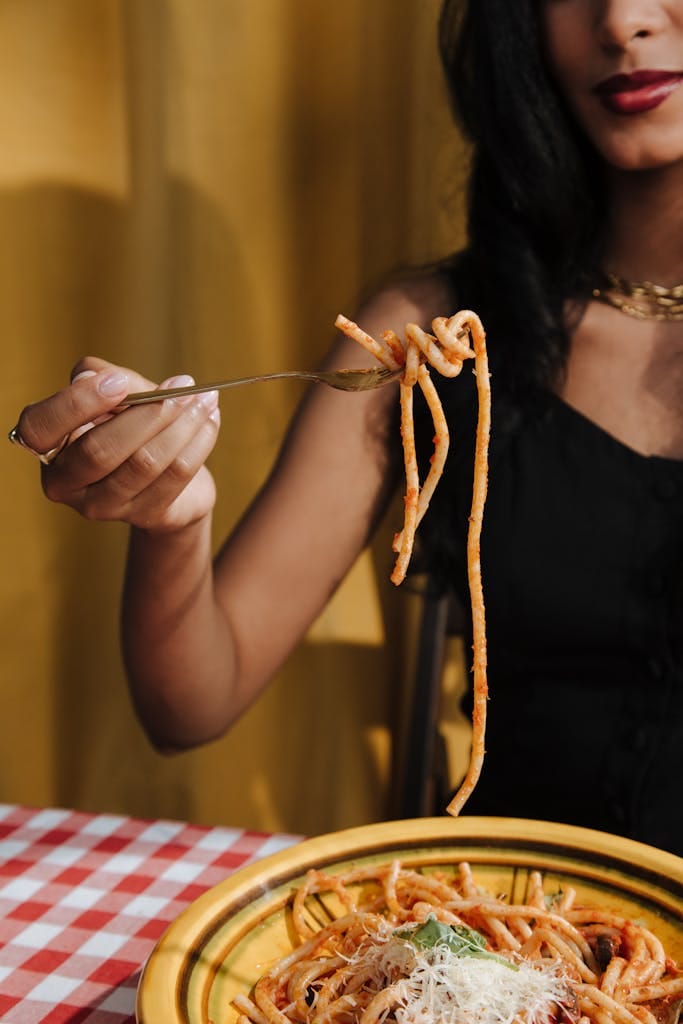FREE SHIPPING OVER $50
Eat Your Carbs, Guilt-Free! This ONE Simple Trick Makes White Rice & Bread Healthier (Science-Backed!)
If you’re a carb lover, this probably makes you feel a pang of guilt every time you reach for that fluffy slice of bread or a comforting bowl of rice. But what if I told you there’s a game-changing, one simple trick that can transform these everyday carbs, making them significantly healthier? What if you could genuinely eat your carbs, guilt-free!?
This isn’t some crazy fad diet or a new, expensive ingredient. This is a science-backed method that leverages a fascinating property of carbohydrates to unlock hidden benefits for your digestion, blood sugar, and even fat burning. It’s a culinary secret that can liberate you from carb-induced guilt and allow you to enjoy your favorite foods with newfound peace of mind.
The Carb Conundrum: Why White Rice & Bread Get a Bad Rap

Before we dive into the solution, let’s quickly understand why white rice and bread often get a bad rap in the nutrition sphere:
- Refinement: Unlike their whole-grain counterparts, white rice and bread are refined. This process removes the outer bran and germ layers, along with much of the fiber, vitamins, and minerals.
- Glycemic Index (GI): Because they lack fiber, these carbs are quickly digested, leading to a rapid rise in blood sugar. This high glycemic response can cause energy crashes, increased hunger, and over time, contribute to insulin resistance and weight gain.
- Lack of Micronutrients: Without the bran and germ, they offer less nutritional bang for your buck compared to brown rice or whole wheat bread.
For years, this has pushed many people to cut them out entirely, leading to feelings of deprivation and unsustainability. But what if there was a way to mitigate these downsides and boost their inherent goodness?
The Secret Revealed: Resistant Starch – Your Gut’s Best Friend!
The ONE simple trick we’re talking about revolves around a fascinating type of carbohydrate called resistant starch. As the name suggests, it’s a type of starch that “resists” digestion in your small intestine. Instead of being broken down into glucose and rapidly absorbed, it travels undigested to your large intestine, where it acts like a prebiotic.
Here’s the magic: When resistant starch reaches your large intestine, it becomes food for your beneficial gut bacteria. These friendly microbes ferment the resistant starch, producing beneficial compounds called Short-Chain Fatty Acids (SCFAs), like butyrate.
Why is this a game-changer for your favorite carbs?
- Lower Blood Sugar Response: Because resistant starch isn’t fully digested into glucose, it significantly lowers the glycemic response of the food. This means fewer blood sugar spikes and crashes, leading to more stable energy and fewer cravings.
- Improved Gut Health: By feeding your good gut bacteria, resistant starch promotes a healthier gut microbiome. A thriving gut is linked to improved digestion, enhanced immunity, and even better mood.
- Increased Satiety: Foods higher in resistant starch can help you feel fuller for longer, potentially leading to reduced calorie intake and supporting weight loss.
- Potential for Fat Burning: Some research suggests that SCFAs produced from resistant starch fermentation may play a role in fat oxidation and energy metabolism.
- Enhanced Nutrient Absorption: A healthier gut environment can sometimes lead to better absorption of other nutrients from your food.
This isn’t just theory; it’s science-backed nutrition that can truly transform how your body processes some carbs.
The ONE Simple Trick: Cook, Cool, & Reheat!
This is where the magic happens, and it’s surprisingly easy. The “trick” to creating resistant starch in your white rice and bread (and other starchy foods like potatoes or pasta) is a simple cycle of cooking, cooling, and optionally, reheating.
When you cook starchy foods, the starch granules absorb water and swell (this is called gelatinization). When you then cool these cooked starches, a process called “retrogradation” occurs. The starch molecules realign themselves, forming a more crystalline, digestion-resistant structure – a.k.a., resistant starch! Reheating it gently afterwards doesn’t eliminate this newly formed resistant starch; in fact, it can sometimes even increase it slightly.
How to Apply the Trick to White Rice:
- Cook Your Rice: Prepare your white rice as you normally would (boil, steam, or use a rice cooker).
- Cool It Completely: This is the crucial step! Once cooked, immediately transfer the rice to a shallow container, spread it out thinly, and let it cool completely at room temperature for at least an hour. For even better results, refrigerate it for a minimum of 6-8 hours (or overnight).
- Reheat (Optional): When you’re ready to eat your carbs, guilt-free!, you can reheat the rice. Microwaving, stir-frying, or gently steaming it will not destroy the newly formed resistant starch.
How to Apply the Trick to Bread:
While cooling a freshly baked loaf of bread will create some resistant starch, the most practical way to apply this trick to bread is often with the use of a toaster.
- Toast Your Bread: Toast your slices of bread until they are lightly golden.
- Cool It Completely: Allow the toasted bread to cool completely. This is the stage where resistant starch begins to form.
- Eat or Re-Toast (Optional): You can eat it cooled, or if you prefer warm toast, give it a very light, quick re-toast, but avoid over-toasting which can break down some of the resistant starch.
Why this works: The process of heating and then cooling fundamentally changes the starch structure, making it less accessible to digestive enzymes and thus increasing its resistant starch content.
What Does This Mean for Your Nutrition?
Embracing this simple trick can have a profound impact on your overall nutrition and health:
- Better Blood Sugar Control: You can enjoy your carbs with less worry about rapid blood sugar spikes, which is beneficial for everyone, especially those managing diabetes or aiming for weight loss.
- Improved Digestion: By acting as a prebiotic, resistant starch fosters a healthier gut microbiome, leading to smoother digestion and potentially reduced bloating or discomfort.
- Increased Satiety: Feeling fuller for longer can help you manage cravings and reduce overall calorie intake, naturally supporting your weight loss goals.
- More Dietary Flexibility: You no longer have to completely banish your favorite carbs. This trick empowers you to enjoy them as part of a balanced diet.
It’s important to note that while this trick makes these carbs healthier, it doesn’t turn them into magic bullets. They should still be part of a balanced diet rich in fruits, vegetables, lean proteins, and healthy fats.
Beyond White Rice & Bread: More Foods to Try This Trick With!
The beauty of this ONE simple trick is that it works for other starchy foods too! Experiment with:
- Potatoes: Cook and cool boiled or roasted potatoes before eating or using them in salads.
- Pasta (My favorite): Cook your pasta al dente, cool it completely, and then use it in cold pasta salads or gently reheat it.
- Oats: Cook your oatmeal, let it cool, and then eat it cold or gently reheat it.
Related Articles
- Unlock Kidney Power: 10 “Detox Superfoods” That Naturally Cleanse & Protect Your Kidneys (Doctor-Approved!)
- These 10 “Innocent” Everyday Foods Are Secretly Loaded With TOXIC Dyes (You’re Eating Them Daily!)
- Aging FAST? The 10 “Healthy” Breakfasts SECRETLY Causing Inflammation (Especially After 40!)
- STOP Eating These! 10 Foods Destroying Your Skin (And 10 Superfoods for a Flawless Complexion)
- The Silent Inflammation Killer You’re Not Eating After 9PM (Doctors Won’t Tell You)



